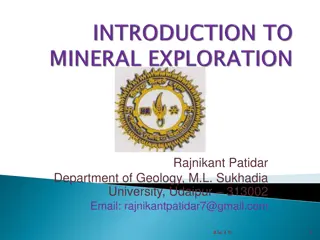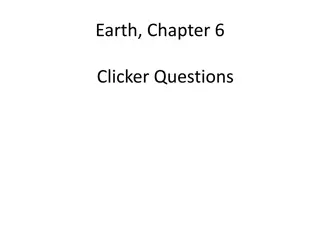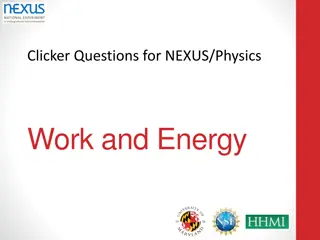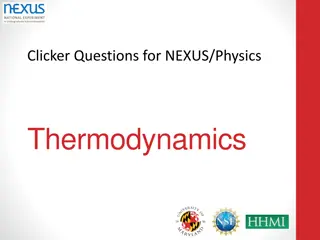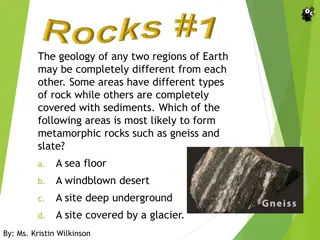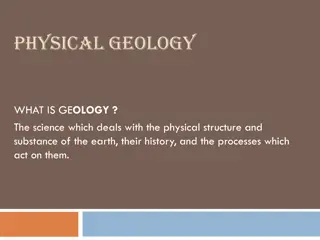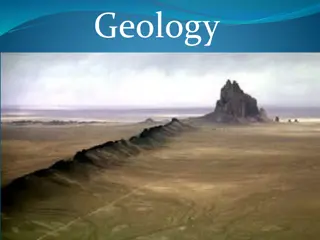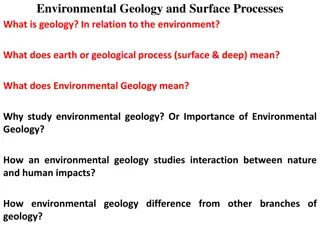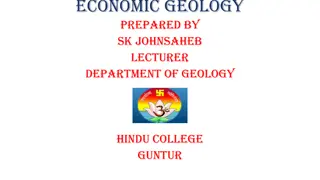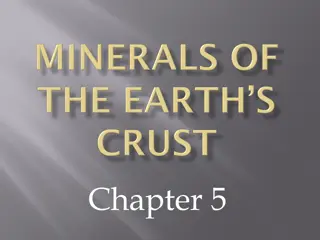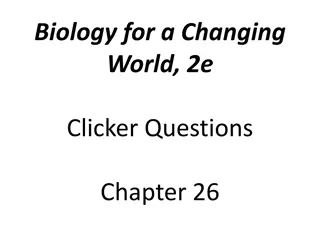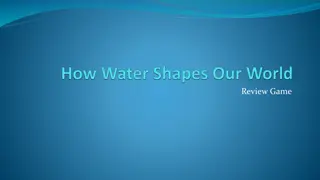Understanding Earth's Geology: Chapter 6 Clicker Questions
Chapter 6 of the Earth's geology covers various topics including the melting associated with the addition of carbon dioxide or water to rocks, types of magma based on silica content, descriptions of hot mafic magma, and characteristics of pyroclastic flows in volcanoes. Test your knowledge with these clicker questions and deepen your understanding of Earth's geological processes.
Download Presentation

Please find below an Image/Link to download the presentation.
The content on the website is provided AS IS for your information and personal use only. It may not be sold, licensed, or shared on other websites without obtaining consent from the author. Download presentation by click this link. If you encounter any issues during the download, it is possible that the publisher has removed the file from their server.
E N D
Presentation Transcript
Earth, Chapter 6 Clicker Questions
6.2 The melting associated with the addition of carbon dioxide (CO2) or water (H2O) to rocks is referred to as a. pressure melting. b. decompression melting. c. addition of volatiles. d. subduction of volatiles. e. pressure addition.
6.2 The melting associated with the addition of carbon dioxide (CO2) or water (H2O) to rocks is referred to as: a. pressure melting. b. decompression melting. c. addition of volatiles. d. subduction of volatiles. e. pressure addition.
6.3 A magma high in silica (SiO2) is called a. mafic. b. magma. c. granite. d. basalt. e. felsic.
6.3 A magma high in silica (SiO2) is called: a. mafic. b. magma. c. granite. d. basalt. e. felsic.
6.4 Hot mafic magma can be described best as a. low viscosity and low fluidity. b. low viscosity and high fluidity. c. high viscosity and high fluidity. d. high viscosity and low fluidity. e. medium viscosity and medium fluidity.
6.4 Hot mafic magma can be described best as a. low viscosity and low fluidity. b. low viscosity and high fluidity. c. high viscosity and high fluidity. d. high viscosity and low fluidity. e. medium viscosity and medium fluidity.
6.5 A pyroclastic flow is a. a slow volcanic flow. b. a subsurface volcanic flow. c. a high-altitude volcanic event. d. a rapid-moving, ground-hugging volcanic flow. e. a volcanic explosion under and ice sheet.
6.5 A pyroclastic flow is a. a slow volcanic flow. b. a subsurface volcanic flow. c. a high-altitude volcanic event. d. a rapid-moving, ground-hugging volcanic flow. e. a volcanic explosion under and ice sheet.
6.7 Most melt at a subduction zone is generated by a. heat transfer melting of the subducting plate. b. decompression melting of the subducting plate. c. addition of volatiles into the asthenosphere. d. decompression melting of the asthenosphere. e. There is no volcanic activity at a subduction zone.
6.7 Most melt at a subduction zone is generated by a. heat transfer melting of the subducting plate. b. decompression melting of the subducting plate. c. addition of volatiles into the asthenosphere. d. decompression melting of the asthenosphere. e. There is no volcanic activity at a subduction zone.






